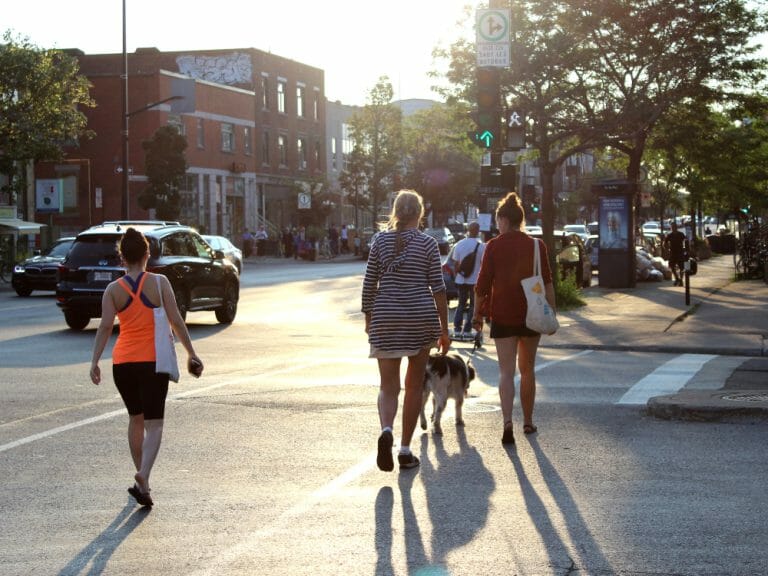Life would be so much easier if everything was within a 15-minute walk away. Having shops, pharmacists, schools, and parks, within a short distance could increase accessibility and reduce car usage. The concept of 15-minute cities stresses this ease of access and emphasizes the importance of the local community, but right-wingers are already demonizing and misconstruing it.
’15-minute cities’ are an urban planning concept in which most necessities and services are within a 15-minute walk or bike ride away. This concept requires many levels of planning to implement, including the consideration of transport, land usage, pedestrian-friendly streets, and community spaces. Walkability and community-based living are integral to this approach, boosting the local economy and forging closer bonds between neighbors.
A manifesto (originating in Barcelona) regarding this planning concept proposed a radical change in how to structure our communities, and in light of the pandemic, local living had gained new importance. Since the population spent most of their time in the home and surrounding areas, accessible and local services were necessary. Flourishing local economies also reduce reliance on cars since everything is so close, which has obvious environmental and health benefits. This approach also considers accessibility for people with disabilities and the elderly, groups that urban planning has historically not included.
This sounds ideal, surely. Why on earth would anybody protest this level of convenience?
Arguments Against the 15-Minute City
Enter the conspiracy theorists. Anti-vaxxers, those who think “lizard people” control everything, and right-wingers are the charming bunch behind much of the online uproar against 15-minute cities.
Theories usually feature oppressive “elites” limiting freedom of movement, rendering the average person unable to wander further than 15 minutes away. Some embellish this imagined dystopia with claims that one may need a permit to leave their local area. At the same time, there are those disparaging it as a “socialist concept” and a Conservative power grab at the same time. The cognitive dissonance here seems comical, but it is rather concerning that people actually think like this.
It doesn’t take long to find TikTok users panicking about “only having 15 minutes of freedom” (thanks, Katie Hopkins). Videos of city planners in Edmonton, Canada are circulating, trying to explain the actual concept to demonstrators. The protestors, however, are willing to hear none of it.
A recent protest in Oxford against this concept also reveals a lot about the demographic of the anti-15-minute city crowd. Most of the protestors were middle-aged and middle-class, otherwise deemed ‘respectable’ by wider society. People in these groups are (statistically) not prone to radicalization since they are not isolated or pushed to the margins. The classic Whatsapp and Facebook propaganda may be responsible for this lack of understanding of the 15-minute city’s fundamental values. This backlash comes from a place of misinformation and panic about limiting personal freedoms. It is, however, important to note that Oxford is implementing traffic-calming measures rather than the 15-minute city design.
The innovations in urban planning during the coronavirus pandemic are also supposedly reason enough to irritate anti-vax and ant-lockdown conspiracy theorists. They see 15-minute cities as a method of control and suppression rather than a way to improve local amenities.
The Limitations and Future of 15-Minute Cities
15-minute cities seem like a rather inoffensive concept. However, the current smear campaign against them may make it more difficult to get the public on board in the future. Condescension and criticism also seem to do very little in the way of convincing others, but in my personal experience, politely explaining the actual concept goes a long way. Better informed education on the 15-minute city can remedy the social-media, conspiracy-theorist brain rot surrounding the subject.
There is still progress to be made with 15-minute cities in practice. It may be difficult to implement this structure in urban areas where land use and infrastructure are more fixed. It may also be difficult in rural areas since the public transportation system may not be established or advanced. The implementation of this model would, with time, improve these issues, but in the short-term, funding may be an issue.
For every potential positive change within society, there have always been those who condemn the supposed wickedness of modernity. The aversion to anything that may benefit society as a whole is fascinating in the sense that it is so counterintuitive. Better education on the benefits of 15-minute cities may sway public opinion, but who knew that wanting to get your groceries easier would cause such rage?














